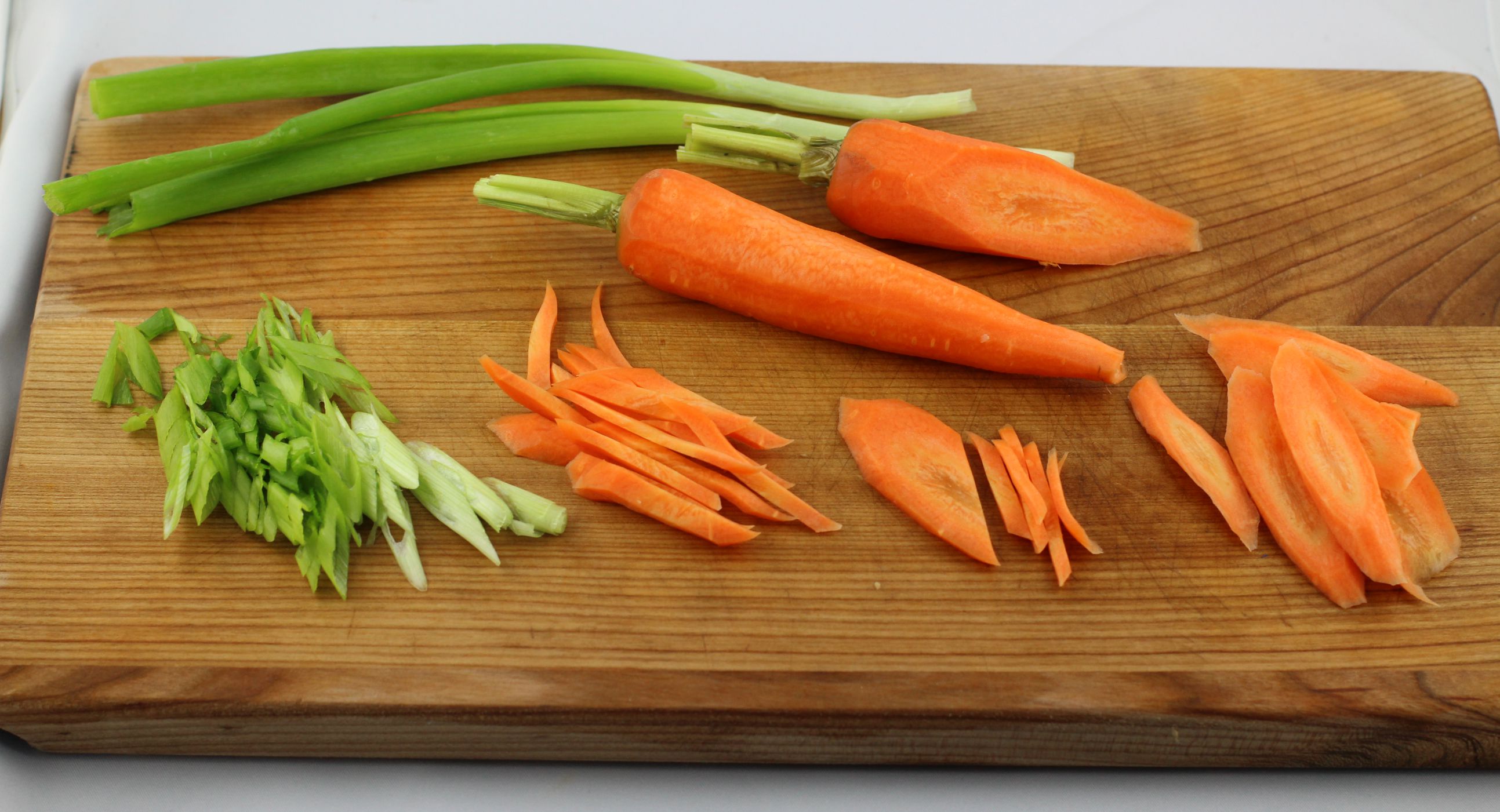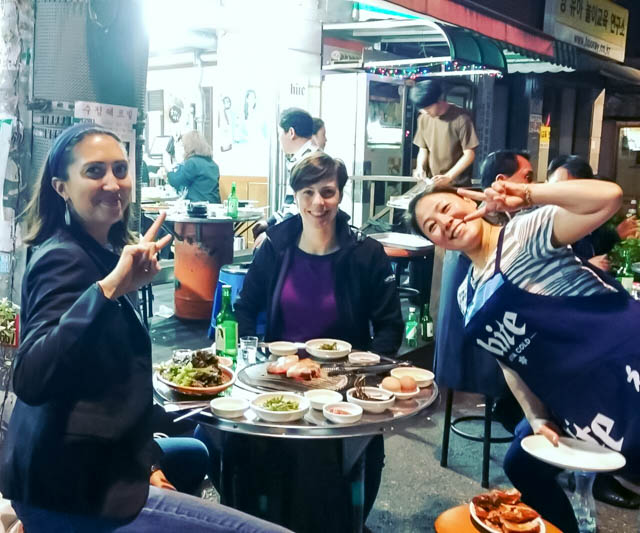oder wieso Bibimbap der perfekte Officelunch ist!
Korea ist mir nicht erst seit der Fußball WM 2002 total sympathisch, ich mochte koreanisches Essen schon immer besonders gerne. Bulgogi, Korean BBQ Ribs, mmmh, mein kulinarisches Herz war da schon als Kind von eingelullt. Und da bei meiner Freundin, mit der ich letzten Herbst auch noch ein paar Tage gemeinsam in Korea war, gerade koreanische Wochen ausgebrochen sind, fühlte ich mich total inspiriert einen meiner Lieblingsofficelunches mit euch zu teilen. Bibimbap! „What is Bibimbap?“ Bibimbap bedeutet eigentlich so viel wie: „Reis der gemischt werden will.“ und ist eines der so ziemlich beliebtesten koreanischen Gerichte überhaupt. Diese „Korean Mixed Rice Bowl“ ist so viel in einem aber vor allem: Comfort Food! Der Kreativität sind bei der Zusammenstellung von Bibimbap keine Grenzen gesetzt. Bibimbap lässt sich außerdem hervorragend transportieren, aufbewahren und wieder warmmachen, sieht auch noch total ansprechend aus, schmeckt spannend, ist abwechslungsreich: Alles für mich Kriterien für einen perfekten Officelunch. Deshalb mache ich auch immer Riesenportionen von allen Komponenten, wenn bei uns zu Hause Bibimbap gekocht wird. So ist bestimmt am nächsten Tag noch genug übrig, damit wir es zur Arbeit mitnehmen können. Dieses Bibimbap ist meine Lieblingsversion: Mais – in Korea extrem beliebt, es gibt sogar eine Art kalten Maistee, der wie Popcorn schmeckt und gefühlt überall geschlürft wird-, Spinat auf koreanische Art mit Sesam, geschmorte Möhren mit Apfelessig – die Koreaner kochen, genau wie ich, sehr gerne mit Apfelessig- Hackfleisch (davon habe ich eigentlich immer etwas eingefroren) und Reis. Für Bibimbap nimmt man am besten koreanischen Rundkornreis oder Sushireis. Wer mich schon ein bisschen kennt weiß, Reis ist mein Grundnahrungsmittel Nummer 1! Der Duft der durch das Haus strömt, wenn der Reiskocher anfängt zu dampfen ist für mich DER Wohlfühlfaktor überhaupt. Wenn ich früher aus der Schule kam, hat es in 99 von 100 Fällen genauso in unserem Treppenhaus gerochen. Bibimbap ist nicht aufwendig und da man die Zutaten so toll variieren kann, wird er nie langweilig und bestimmt auch bei euch bald regelmäßig auf dem Teller zu finden. Also, auf an den Herd, nachkochen und 맛있게 드세요 – masistgedeuseyo 😉










Recipe: Bibimbap
Preparation time: 20 minutes
Cooking time: 30 minutes
Difficulty level: beginner
Ingredients for 4-5 servings:
- 350g ground beef (but mixed ground also works great)
- 200g Korean short grain rice or sushi rice
- 300ml water to cook the rice
- 75ml water for the meat
- 290g carrots
- 100g baby spinach
- Kimchi, to taste
- 2 boiled corn on the cob (it’s sealed in the vegetable counter) or 1 can of corn
- 2 onions
- 3 cloves of garlic
- 1 tbsp sesame oil (toasted, not native)
- Highly heatable oil
- Gochujang Paste (Korean Chili Paste)
- 20g ginger
- 2 tbsp sesame seeds
- Soy sauce (4 tbsp for the meat and 1.5 for the spinach)
- 4 tablespoons Shaoxing wine or dry sherry
- 2 tbsp apple cider vinegar
- sea-salt
- sugar
- Freshly ground black pepper
- About 1 small handful of coriander (optional)
Preparation:
- Peel the carrots and cut into sticks (see photo.)
- Chop 1 large onion for the minced meat, cut the corn kernels off the cob and heat oil in a pan. Don’t skimp on the oil. The ground beef is very lean and needs a little more fat.
- Fry the meat in the hot pan until crumbly, add a large pinch of salt, then add onions and corn, mix everything (see photo) and now add 4 tablespoons of soy sauce and the Shaoxing wine and simmer for a few minutes over medium heat. Now season with salt and pepper, add 75ml water, mix everything well and after about 1 minute put the pan aside. Everything must go well now.
- Wash the rice. Until the water is completely clear (see photos). To do this, pour water over and over again, stir with your hands, pour away the water, etc. Repeat until the water is clear. That’s quite a few passes. Then, in a small saucepan (whose lid closes very well), bring the rice and 300ml of water to a boil over medium heat, initially without the lid. Cook for 1 minute, then finish cooking on the lowest flame with the lid closed. This takes 15 minutes. Then take it off the stove and let it simmer with the lid closed. Do not under any circumstances lift the lid during the first 12 minutes. Then too much steam will escape and the rice will no longer be perfect. It’s easier if you have a rice cooker. Then just put the washed rice in the cooker with clear water, close the lid and press the button.
- Wash and drain the spinach. Finely chop the garlic and ginger and finely chop the onion.
- Toast the sesame seeds over medium heat. (see photo)
- Heat the frying oil over medium heat. Then add the chopped onions, ginger and grated carrots. Mix well. Now add the apple cider vinegar, a pinch of salt and the sesame oil. Add a pinch of sugar. Cook and stir until the carrot is soft but still al dente. Finally season with salt and pepper.
- In a higher pan or roaster, heat the oil again (1 tbsp normal and 1 tbsp sesame oil). In great heat. Now add the garlic and stir briefly alone in the pan and now add the spinach and stir until it wilts. Now mix with 1.5 tbsp soy sauce, the sesame seeds and season with salt and pepper. Stir and let it sizzle until it has the right consistency (see photo).
- Now fry the fried eggs and don’t forget to add some salt.
- Arrange everything in bowls. Rice at the bottom and a little of each ingredient on top of the bowl. Now add the kimchi. Now quickly chop the coriander and add some to each serving. Like on the picture. Some gojuchang paste in the middle. Here according to your own feelings. It’s better to add a little more gochujang later, when you’ve already mixed everything and you’re still missing a bit of spiciness. Mix everything together at the table right before eating. Finished! Enjoy your meal!

